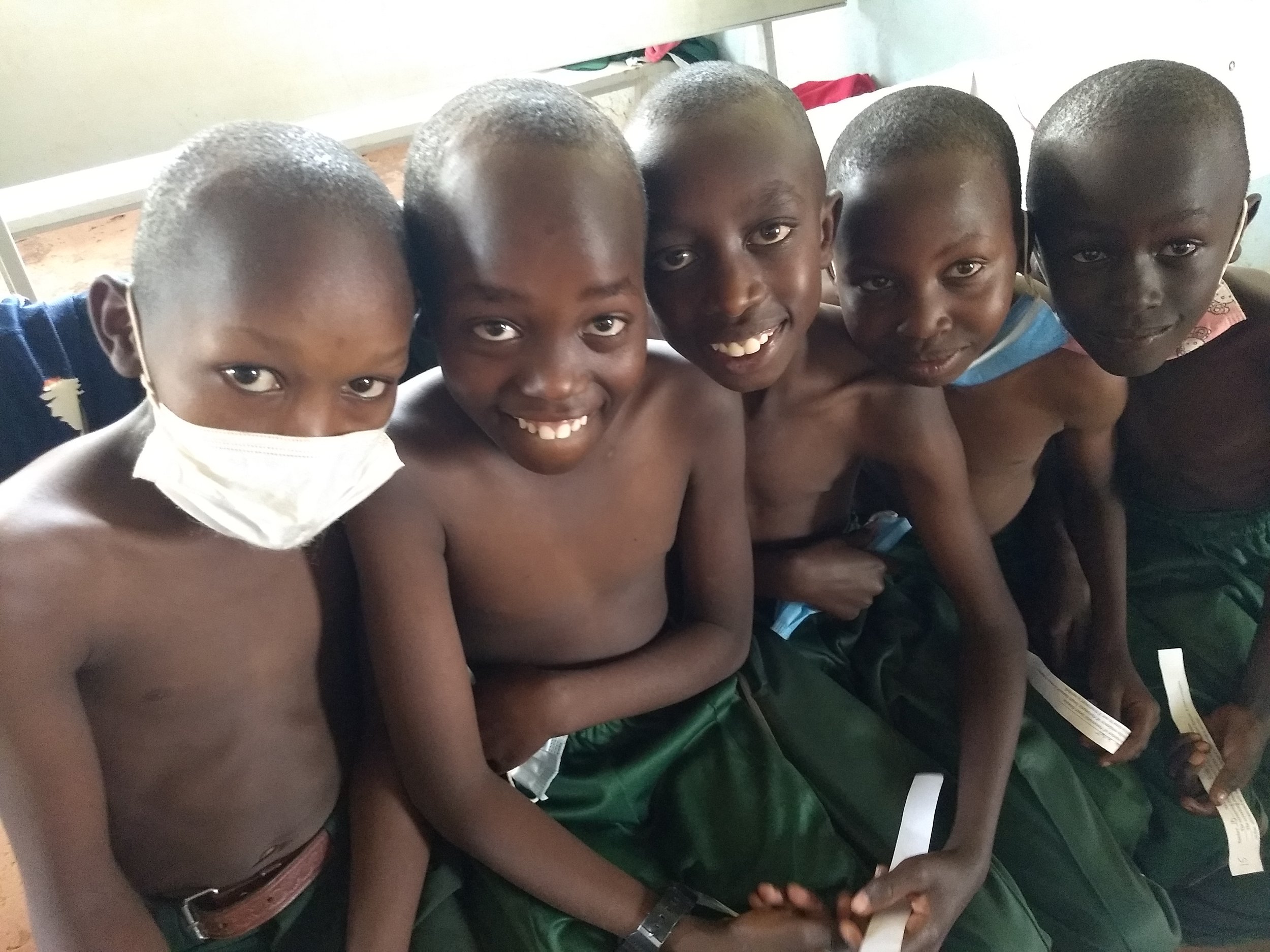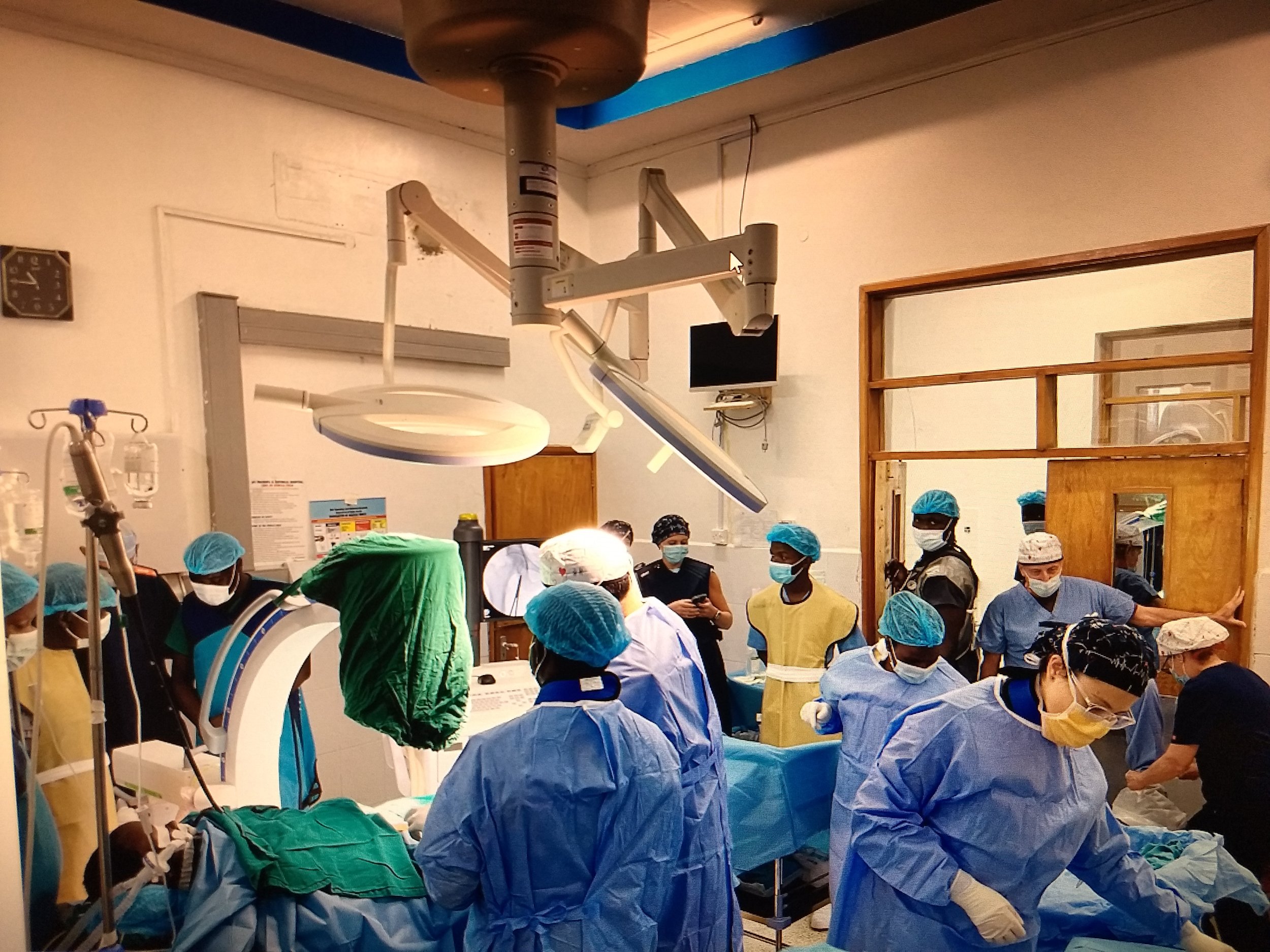On this teaching trip we were honored and blessed to have Dr. Ross Goodfellow, Dr Owais Abdul-Kafi, and Dr Micaila Iantorno, all skilled interventional/structural cardiologists with us. The team also included skilled cardiac ultrasound sonographers Eileen Nemec and Nancy Martin. There skill allowing us to follow our wires and catheters passing through the heart with skilled ultrasound is key to a safe procedure,
Tenwek Hospital 2016
First of all, everyone and especially I (Ron) missed Colleen's organization on site and appreciated her 100 + hours of work to pre-organize this teaching trip at two large hospitals in Kenya (1000 bed and 800 bed public hospitals) for resource limited people. Above is a pic of Colleen on a prior trip scrubbing in on her first permanent pacemaker because no OR nurses were available.
We have done this route before so I didn't bother the flight crew with questions about why we were deviating over the Red Sea toward Saudi Arabia. We are dodging Sudan and Somalia (on the flight tracking below) Both countries have surface to air missiles with capability to 80,000 feet and are less "predictable" than the other over flight counties.
The pictures above and below show the Cardiology team that we are training. First at the procedural table and second imaging with an ultrasound catheter that goes down the esophagus (showing the wall between the right and left atrium that we need to puncture safely.)
Below is a sample of 5 of the 20 patients, the youngest 12 years old. Without the procedure they would have only lived 2-10 years but now will have normal lives. None of the families would have had the financial resources needed.
As Colleen emphasizes and trains, the post-op care is essential. Below is the great CCU team that makes sure these young people recover along with 4 from our team.
Our volunteers each trip of 5-8 cardiologists, nurses, and technicians are vital in passing off the skill sets to our overseas colleagues.. Below is Eileen Nemec, likely the top pediatric cardiac ultrasound person in Minnesota. She is comforting and praying for a 17 yo Turkana girl pre-op. She is from an extremely poor family (2-3 dollars per day and they live in the chronic drought ridden NW. ) The patient was our highest risk (complex pulmonary valve dilation) but had a perfect result. Second pic is her balloon through the valve.
Eileen Nemec sonographer with patient
Both hospitals are so aware what a high risk this procedure is in these very sick hearts that they initiate prayer before the procedure, sometimes in both Arabic and English. We sometimes think that the highest level coordinating power is Colleen but it is still higher!

























